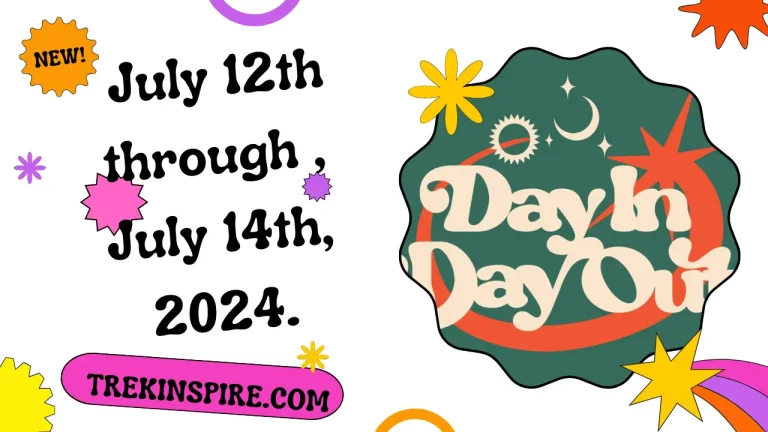1936 Salzburg Festival Guide to Location, Guests, & Ticket info

If you love history and the performing arts, the 1936 Salzburg Festival stands out as a shining example of artistic glory before the political storms of late-1930s Europe. Much like the Lafayette Art and Wine Festival Guide to Guests, and Ticket info, this Austrian celebration blended fine art, music, and culture into an unforgettable experience. It showcased the best of Europe’s artistic talent at a time when creativity thrived even in the face of uncertainty.
Held every summer in Salzburg, Austria, the festival became one of the world’s most prestigious cultural events. This Salzburg Festival marked a turning point in the festival’s growth and remains a significant historical reference in classical music and theater.
What Type of Festival Is It?
The 1936 Salzburg Festival was primarily a music and drama festival, combining opera, symphonic concerts, and theatrical performances. Originating in 1920 with the famous play Jedermann by Hugo von Hofmannsthal, the festival evolved into a celebration of European high culture.
By 1936, it had become internationally famous, attracting leading conductors like Arturo Toscanini and Bruno Walter. The festival highlighted classical operas, open-air dramas, and orchestral masterpieces, symbolizing unity through art.
It served as a stage for cultural diplomacy, showing how music could connect nations in a tense pre-war Europe. This was more than entertainment—it was a statement of peace through art.
Location of the Festival
The 1936 Salzburg Festival took place in Salzburg, Austria, a city world-renowned as the birthplace of Wolfgang Amadeus Mozart. Its stunning baroque architecture and Alpine scenery made it a perfect backdrop for such a grand artistic event.
Key venues included:
- The Cathedral Square (Domplatz) – the site of Jedermann.
- Felsenreitschule – a theatre carved into the rock.
- Festspielhaus – the main hall for operas and symphonic concerts.
The combination of indoor grandeur and open-air performances made Salzburg a living stage for culture, captivating audiences from all over Europe.
Who Organizes This Festival?
The Salzburg Festival was founded by Hugo von Hofmannsthal, Richard Strauss, Max Reinhardt, Alfred Roller, and Franz Schalk after World War I. They envisioned an event to revive European spirit through art.
By 1936, the festival was managed by the Salzburg Festival Association, supported by the Austrian government, private sponsors, and local artists. International cooperation and artistic excellence were the driving forces behind its organization.
Conductor Arturo Toscanini played a vital role in shaping the 1936 program, leading some of its most acclaimed performances. His commitment to artistic integrity made that year one of the most respected in festival history.
Dates and Times
The 1936 Salzburg Festival was held from July 25 to August 31, 1936. For five weeks, Salzburg transformed into a global center of music and theatre.
Notably, August 15, 1936, marked the 100th performance of the play Jedermann, which had become a festival tradition since its debut in 1920.
Performances were scheduled daily, often in the evenings, with matinee concerts and afternoon recitals held throughout the festival. The long European summer days allowed for extended programming under the soft glow of the Austrian sunset.
Where to Buy Tickets
In 1936, festival tickets were sold through official box offices in Salzburg and via postal reservations for foreign guests. Wealthy patrons often booked seats months in advance, given the festival’s growing international fame.
Today, the Salzburg Festival maintains this tradition of early booking through its official website. But back then, eager audiences lined up at the Festspielhaus ticket counters, hoping to witness history.
The ticket system, while less digital than today, was highly organized for its time—reflecting the festival’s dedication to accessibility and class.
Performers at the 1936 Salzburg Festival
The 1936 Salzburg Festival attracted some of the greatest artists of the century. Below is a summary of key performances that defined this golden year:
| Opera/Work | Composer | Conductor | Dates (1936) |
|---|---|---|---|
| Die Meistersinger von Nürnberg | Richard Wagner | Arturo Toscanini | 8, 14, 18, 22 August |
| Orfeo ed Euridice | Christoph Gluck | Bruno Walter | 1 and 17 August |
| Falstaff | Giuseppe Verdi | Arturo Toscanini | 31 July, 10, 20, 26 August |
| Don Giovanni | Wolfgang Mozart | Bruno Walter | 28 July, 4, 13, 24 August |
| Le nozze di Figaro | Wolfgang Mozart | Felix von Weingartner | 27 July, 29 August |
Each of these performances highlighted the festival’s deep connection to Mozart’s legacy and to opera’s universal appeal. The Vienna Philharmonic Orchestra and Vienna State Opera Chorus performed under these legendary conductors.
Another fascinating detail—the Trapp Family Singers, who later inspired The Sound of Music, performed during the festival, marking one of their earliest international appearances.
Why the 1936 Salzburg Festival Matters
This Salzburg Festival represents the peak of what historians call its “golden era” (1934–1937). The festival combined world-class artistry, daring programming, and moral courage.
Arturo Toscanini’s decision to conduct Wagner’s Die Meistersinger von Nürnberg was seen as a symbolic act, asserting that music belongs to humanity, not to politics or propaganda.
This edition of the festival stood as a cultural beacon of hope just two years before Austria’s annexation in 1938. It preserved freedom of art during turbulent times. The 1936 festival is thus remembered not only for its music but for its message of cultural unity.
How the Festival Program Was Structured
The 1936 festival balanced opera, symphonic concerts, and drama with precision and style. The program typically included:
- Opera performances at the Festspielhaus during evenings.
- Orchestral concerts with works by Mozart, Beethoven, and Bruckner.
- Theatrical shows, especially Jedermann, performed outdoors on the Cathedral Square.
- Religious music in the city’s cathedrals and halls.
Each event was designed to honor both Salzburg’s heritage and Europe’s broader cultural achievements.
Context and Planning
Planning the 1936 Salzburg Festival was an immense effort. Organizers coordinated international artists, managed logistics, and secured funding from sponsors and the Austrian government.
Amid growing political pressure in Europe, the festival managed to remain neutral, focusing on art rather than ideology. That independence made the event a powerful cultural statement in a world heading toward division.
Visitors traveled from across Europe and America, booking months in advance to experience performances by Toscanini and Walter. Salzburg during those weeks was filled with excitement, elegance, and musical energy.
To understand the logistics and excitement of attending such a grand event, imagine a contemporary parallel like the Earl Scruggs Music Festival Guide to Guests, and Ticket info. Just as that modern music festival celebrates folk and bluegrass culture, the 1936 Salzburg Festival celebrated classical art on a grand European scale.
Visiting Salzburg Today
Walking through Salzburg today, you can still sense the echoes of the 1936 Salzburg Festival. The same streets and squares host annual performances, and the same theaters fill with audiences from around the world.
Standing before the Salzburg Cathedral, one can imagine the applause that greeted the 100th performance of Jedermann in 1936. The city remains a living museum of music, culture, and art, deeply shaped by its festival’s enduring spirit.
Conclusion
The 1936 Salzburg Festival was more than just a music event—it was a cultural milestone. Running from July 25 to August 31, 1936, it showcased the genius of conductors like Toscanini and Walter, the brilliance of Mozart’s homeland, and the resilience of art under uncertainty.
It demonstrated how artistic freedom could unite people and stand firm against political tides. Its operas, concerts, and dramas reflected the best of European civilization.
Today, the 1936 Salzburg Festival remains a shining example of how passion, creativity, and collaboration can elevate humanity through art. It is a reminder that even in challenging times, music and culture continue to bring light to the world.






